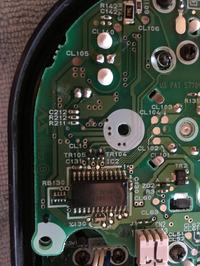boomtheroom
Newbie level 6
hi all
i,m a newbie at the best of terms, i have just realized that my led on my motorcycle
normally glows when first turned on ignition is not working anymore , if i put my multi meter across the legs in diode test mode i get a reading of .010 v i get the buzz noise from my multi meter but led doesn't light up..what does this mean?
any help would be appreciated
i,m a newbie at the best of terms, i have just realized that my led on my motorcycle
normally glows when first turned on ignition is not working anymore , if i put my multi meter across the legs in diode test mode i get a reading of .010 v i get the buzz noise from my multi meter but led doesn't light up..what does this mean?
any help would be appreciated
![IMG_5148[1].jpg](/data/attachments/68/68288-d877acdd04371d734e918f676a1760f5.jpg)
